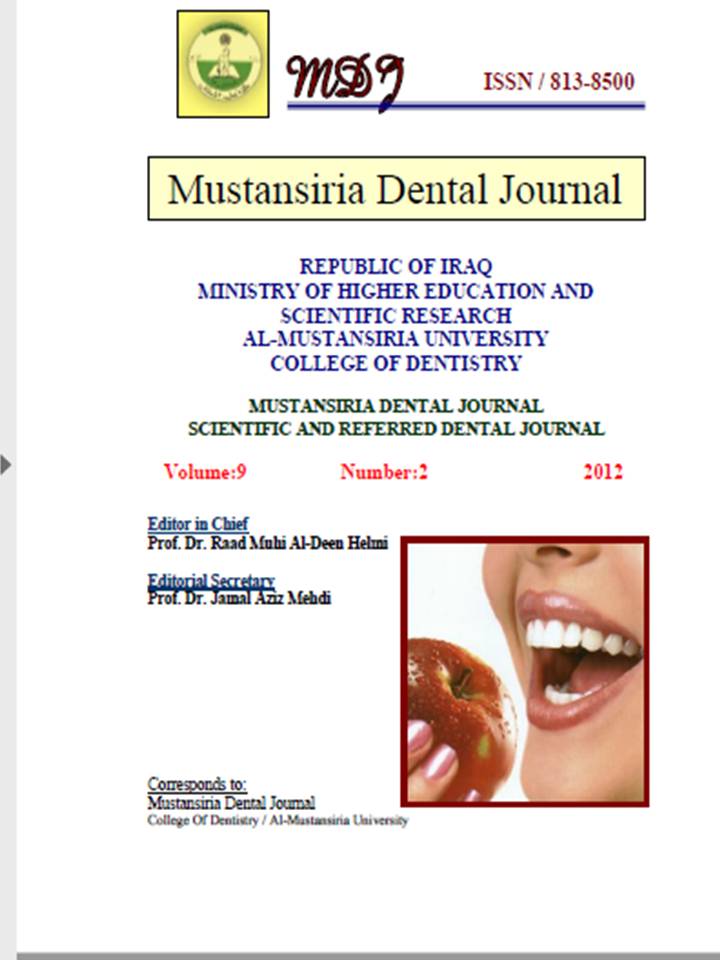Effect of 38%hydrogen peroxide agent on color change of composite resins stained with tea and coffee beverages (An in vitro study)
DOI:
https://doi.org/10.32828/mdj.v9i2.258Keywords:
Keywords: Hydrogen peroxide, color change, composite resins, spectrophotometer.Abstract
Background: The esthetic application of bleaching materials has gained popularity,
with consequences for teeth and restorative materials. The purpose of this an in
vitro study was to investigate the effect of in-office bleaching agent (38%
hydrogen peroxide) on the color change of three composite resins after staining
with tea and coffee beverages.
Materials and Methods: Sixty disc-shaped samples from three different composite
resins (Tetric Ceram, Tetric Flow and Tetric Evo Ceram) were used in this study.
The samples of each group were randomly divided into two subgroups according
to type of beverages (tea and coffee) used for staining of samples. After staining
of composite resins the total color change (ΔE1 ) was calculated using
spectrophotometer, then the samples immersed in WHITEsmile® office bleaching
agent for 15 min x 3 times with a 7 days interval followed by ΔE2 calculation.
Data were subjected to the ANOVA, LSD and student t-test at 0.05 significance
level.
Results: The results revealed that, there was clinically significant color change ΔE>
3.3 with a statistically highly significant differences (P=0.000) for all the groups.
Coffee causes more discoloration than tea. After bleaching, the samples became
whiter in color and only appreciable by skillful operator but considered clinically
acceptable ΔE1 - ΔE2 < 3.3.
Conclusion: Tea and coffee beverages causes discoloration in composite but this
effect was depended on the type of beverages and composite resins. The most of
color change occurred with Tetric Flow composite resin after immersion in coffee
beverage. The bleaching agent (38% hydrogen peroxide) can remove the staining
of composite resins and make its color clinically acceptable.

Downloads
Published
Issue
Section
License
The Journal of Mustansiria Dental Journal is an open-access journal that all contents are free of charge. Articles of this journal are licensed under the terms of the Creative Commons Attribution International Public License CC-BY 4.0 (https://creativecommons.org/licenses/by/4.0/legalcode) that licensees are unrestrictly allowed to search, download, share, distribute, print, or link to the full texts of the articles, crawl them for indexing and reproduce any medium of the articles provided that they give the author(s) proper credits (citation). The journal allows the author(s) to retain the copyright of their published article.
Creative Commons-Attribution (BY)








